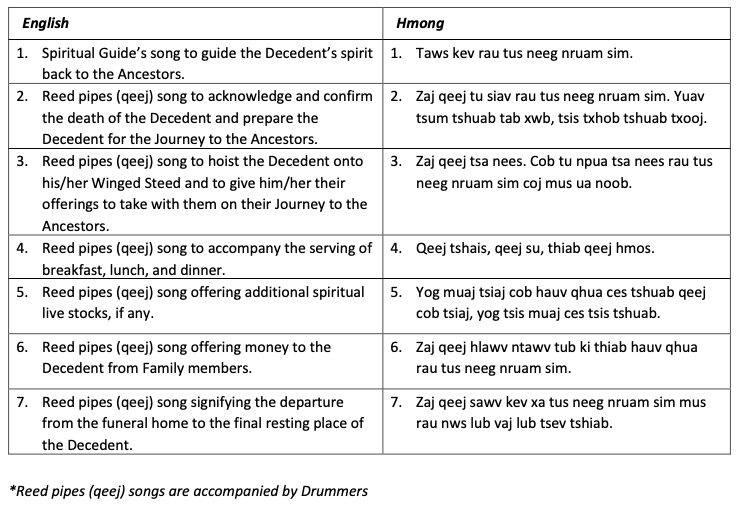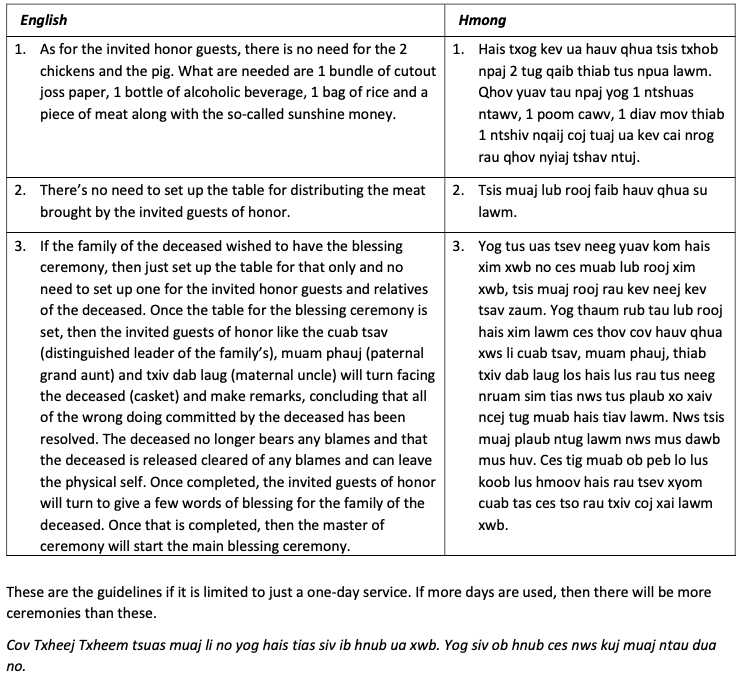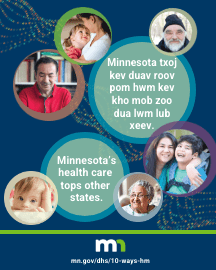The Minnesota Department of Health prepared these recommendations with Hmong Community Leaders and Cultural and Spiritual Leaders. The guidance is both for business owners of funeral homes and for the Hmong community about how to carry out funerals during the COVID-19 pandemic. Venues hosting planned services and other gatherings are encouraged to follow the guidance in this document and other documents referenced in this document as they apply to specific activities.
COVID-19 spreads when an infected person breathes out droplets and very small particles that contain the virus. These droplets and particles can be breathed in by other people; land in their eyes, nose, or mouth; or land on surfaces that people touch. The risk of COVID-19 transmission increases when people gather with other households.
Get vaccinated. Vaccination is one of the best things you can do to prevent getting or spreading COVID-19.
Wear a face covering when recommended by MDH or CDC. There is no longer a statewide requirement to wear face coverings in most settings. However, other federal, state, and/or local laws may require face coverings in some settings, and businesses may set their own requirements.
If you are not vaccinated: Keep at least 6 feet of physical distance from other households and follow the face covering recommendations in the above MDH resources.
Vaccinated or not vaccinated, MDH strongly recommends that everyone: Wash their hands often. Follow guidance on staying home (quarantine) if you were exposed to someone who has COVID-19. People who are fully vaccinated may not need to quarantine in many situations.
Key recommendations for funerals
- Speak with the funeral establishment or venue hosting the service or ceremony to ensure you understand the establishment’s recommended or required COVID-19 strategies. Communicate these strategies in advance to others attending the funeral where possible.
- Music is an integral part of many faith-based services and funerals. Singing and instrumental music produced by woodwind or brass instruments are higher-risk activities for spreading COVID-19 due to a higher-than- normal release of respiratory droplets into the air. If choosing to provide live music of any kind, consider the recommendations for Recommendations for Music Activities and Performances During COVID-19 (www.health.state.mn.us/diseases/coronavirus/musicguide.pdf).
Recommended hours of services
For services involving multiple participants who have not been fully vaccinated, or when participant vaccination status is unknown, MDH recommends that services be limited in time (for example, no more than 10-12 hours). There is no specific “safe” amount of time for a funeral service, but based on what we know, longer interactions between people increase the risk of transmitting the virus. Because the virus can linger in the air, it is important for people to keep their time in the shared space as short as possible. Minimizing the number of people and the time of interaction can lower the risk during the pandemic.
Cultural religious practices
The Hmong 18 Council and other cultural leaders in the Hmong community advise the following minimum cultural practices needed to complete a Hmong funeral.
Basic guidelines for traditional Hmong funeral
Txheej txheem kev nruam sim (Ntees ploj tuag)
The traditional Hmong funeral can be conducted in as short a time as a day-long service. The minimum proceedings that should be conducted are as follows:
Hais txog lub ntees tuag uas siv ib hnub ua xwb los yeej tau lawm. Yam uas yuav tsum tau ua xwb xwb li ces muaj raws li nram qab no:
Funeral proceeding with invited guests of honor and blessing ceremony
Lub ntees nruam sim muaj hauv qhua thiab hais xim
Personnel recommendations
Thawj lwm tub ncig
For more information, call the MDH COVID-19 Public Hotline at 1-833-431-2053.

























